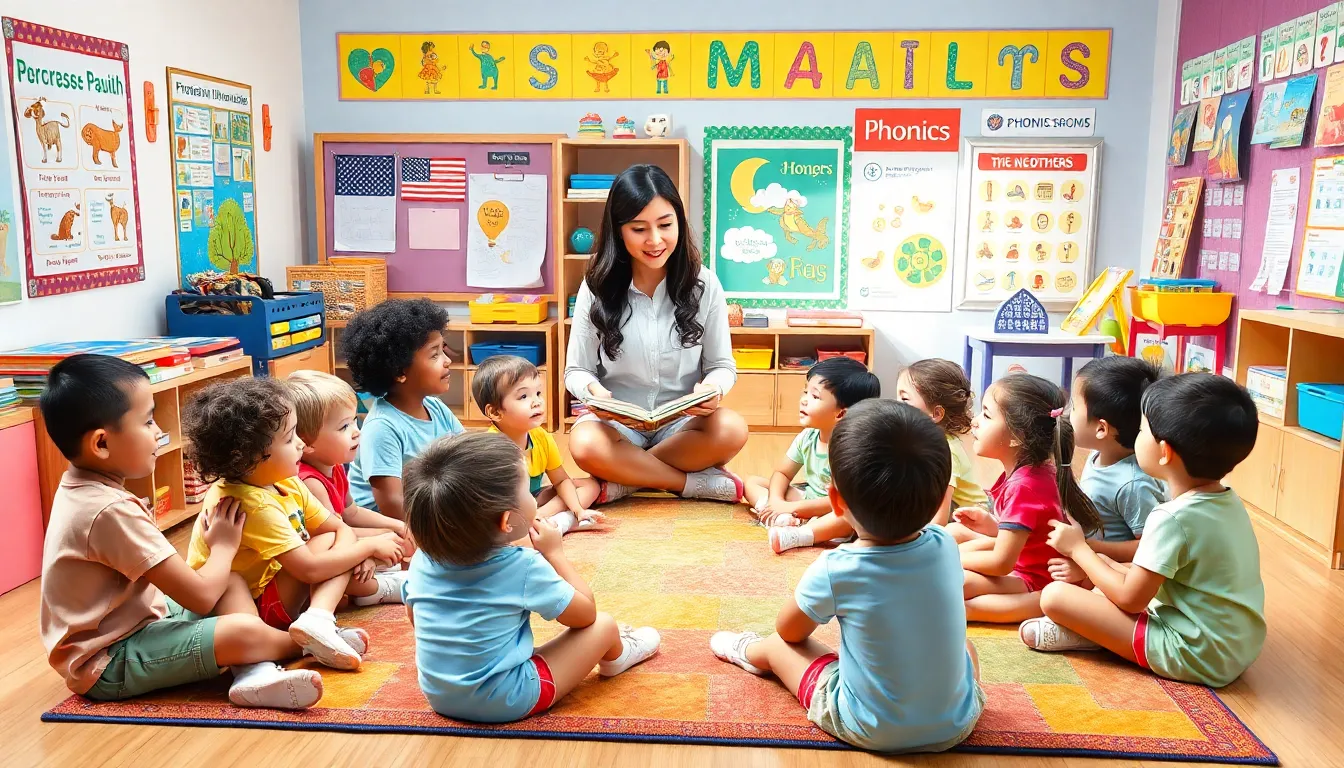Table of Contents
ToggleIn a world where toddlers can negotiate snack time like seasoned diplomats, child language projects are stepping up to the plate. These initiatives explore how little ones pick up language, turning the chaos of babbling into a symphony of understanding. Who knew that deciphering “gibberish” could lead to groundbreaking insights about communication?
Overview of Child Language Projects
Child language projects examine the intricate process of language acquisition among toddlers. Researchers focus on how young children develop communication skills from early babbling to structured speech. The projects illustrate that even infants display remarkable abilities to negotiate meanings through their vocalizations.
Many studies concentrate on how children respond to verbal cues and social interactions. Investigations often reveal that toddlers use context to derive understanding, reflecting their capacity to learn rapidly. Observational methods feature prominently in these studies, capturing children in natural settings to gather authentic data.
Researchers utilize various methodologies, including longitudinal studies that track language development over time. Collaborations between linguists, psychologists, and educators enrich findings, bringing diverse perspectives to the investigations. Notably, recent projects utilize advanced technology to analyze speech patterns and linguistic variations among toddlers.
In addition, findings from these projects contribute to broader discussions about communication and cognitive development. Insights gained inform strategies in early childhood education, fostering environments conducive to language learning. The data allow practitioners to recognize the crucial stages of language growth and implement supportive interventions.
Child language projects shed light on the complexities of early communication, providing significant contributions to understanding child development. Analysis of their results influences current educational practices, ensuring children receive the best opportunities for language acquisition. Overall, these initiatives create a foundation for effective communication skills that extend into later life.
Importance of Child Language Development


Child language development plays a crucial role in a child’s overall growth and future success. Understanding these benefits helps parents and educators create supportive environments.
Cognitive Benefits
Cognitive development stems from robust language skills. Children with strong language abilities demonstrate improved problem-solving skills and enhanced critical thinking. Their ability to articulate thoughts leads to better comprehension of complex concepts. For example, toddlers exposed to rich language experiences excel in tasks requiring reasoning and imagination. Studies reveal that early language exposure correlates with higher academic performance later in life. Furthermore, language development supports memory retention and retrieval, laying a foundation for lifelong learning.
Social Benefits
Social advantages emerge from effective language use as well. Children who develop strong communication skills foster deeper relationships with peers and adults. They express their needs and emotions more clearly, reducing frustration and misunderstandings. Engaging in conversations boosts empathy and social awareness, helping children navigate diverse social situations. For instance, toddlers who interact regularly with caregivers and peers show increased cooperation and conflict resolution skills. Additionally, early language development lays the groundwork for future teamwork and collaboration.
Types of Child Language Projects
Child language projects encompass various initiatives aimed at enhancing language acquisition among young learners. These efforts primarily fall into two categories: classroom-based initiatives and community programs.
Classroom-Based Initiatives
Classroom-based initiatives focus on integrating language development into daily learning activities. Teachers employ specific strategies, such as interactive read-alouds and collaborative storytelling, to engage students. These methods encourage verbal expression and enhance comprehension skills. They also utilize tools like speech recognition technology to track progress. This approach allows educators to tailor instruction based on individual needs. Frequently, these projects include peer interactions, fostering a supportive learning environment that nurtures communication skills.
Community Programs
Community programs aim to extend language development beyond the classroom. Organizations often provide workshops and playgroups for children and parents. These sessions emphasize literacy and conversation, promoting a culture of language learning. Local libraries usually host reading events, engaging families in enjoyable language experiences. Articulating thoughts and feelings in social settings builds confidence and competence. Additionally, partnerships with local businesses can enhance these programs by facilitating real-world language use. This collaboration ensures children receive comprehensive support in their language development journey.
Key Strategies for Success
Effective strategies enhance the success of child language projects. Prioritizing both parental involvement and professional training creates a comprehensive approach to language development.
Parental Involvement
Active engagement by parents significantly influences language acquisition. Parents can integrate language-rich activities into daily routines, such as reading together and encouraging conversations. Participation in community programs fosters a supportive environment, allowing parents to collaborate with others. Creating a language-rich atmosphere at home includes limiting screen time and emphasizing interactive play. By modeling effective communication, caregivers set a foundation for language skills. Research shows that children exposed to nurturing language environments demonstrate improved vocabulary and comprehension skills.
Professional Training
Equipping professionals with the right training ensures successful implementation of language projects. Educators benefit from workshops and resources focused on language development techniques. Training should include understanding child language milestones and effective communication strategies. Adapting teaching approaches to fit diverse learning styles increases engagement. Ongoing professional development fosters continuous improvement and effectiveness in supporting children’s language skills. Collaboration between educators and speech-language pathologists enhances the program’s quality. The integration of current research into training modules keeps practices aligned with the latest findings in child language development.
Challenges in Implementing Projects
Implementing child language projects often encounters significant challenges that can hinder their effectiveness.
Funding Issues
Securing adequate funding remains a major hurdle. Many projects rely on grants, which can be inconsistent and competitive. Limited financial resources often restrict the ability to hire qualified staff or purchase necessary materials. In some cases, projects struggle to sustain long-term initiatives due to inconsistent funding streams. Organizations must often seek multiple sources of funding to maintain operations and ensure program continuity. Crafting compelling proposals that demonstrate the project’s impact on child language development can enhance chances of securing financial support.
Accessibility Concerns
Accessibility directly impacts the reach of language projects. Geographic barriers make it difficult for some children and families to participate. Rural areas may lack access to community programs and trained professionals, limiting opportunities for language development. Furthermore, cultural and language differences can create additional challenges. Projects must adapt materials to ensure inclusivity and relevance for diverse populations. Collaborating with local community leaders can facilitate connections and promote engagement. Addressing these concerns is essential for maximizing participation and fostering language skills among all children.
Child language projects play a vital role in understanding how young children develop essential communication skills. By focusing on both classroom-based initiatives and community programs, these projects create rich language experiences that foster cognitive and social growth.
Parental involvement and professional training are crucial for maximizing the impact of these initiatives. Addressing challenges like funding and accessibility ensures that every child has the opportunity to thrive in their language development journey.
As research continues to evolve, the insights gained from these projects will shape educational practices and support children in becoming effective communicators. Investing in child language projects is investing in a brighter future for every child.




